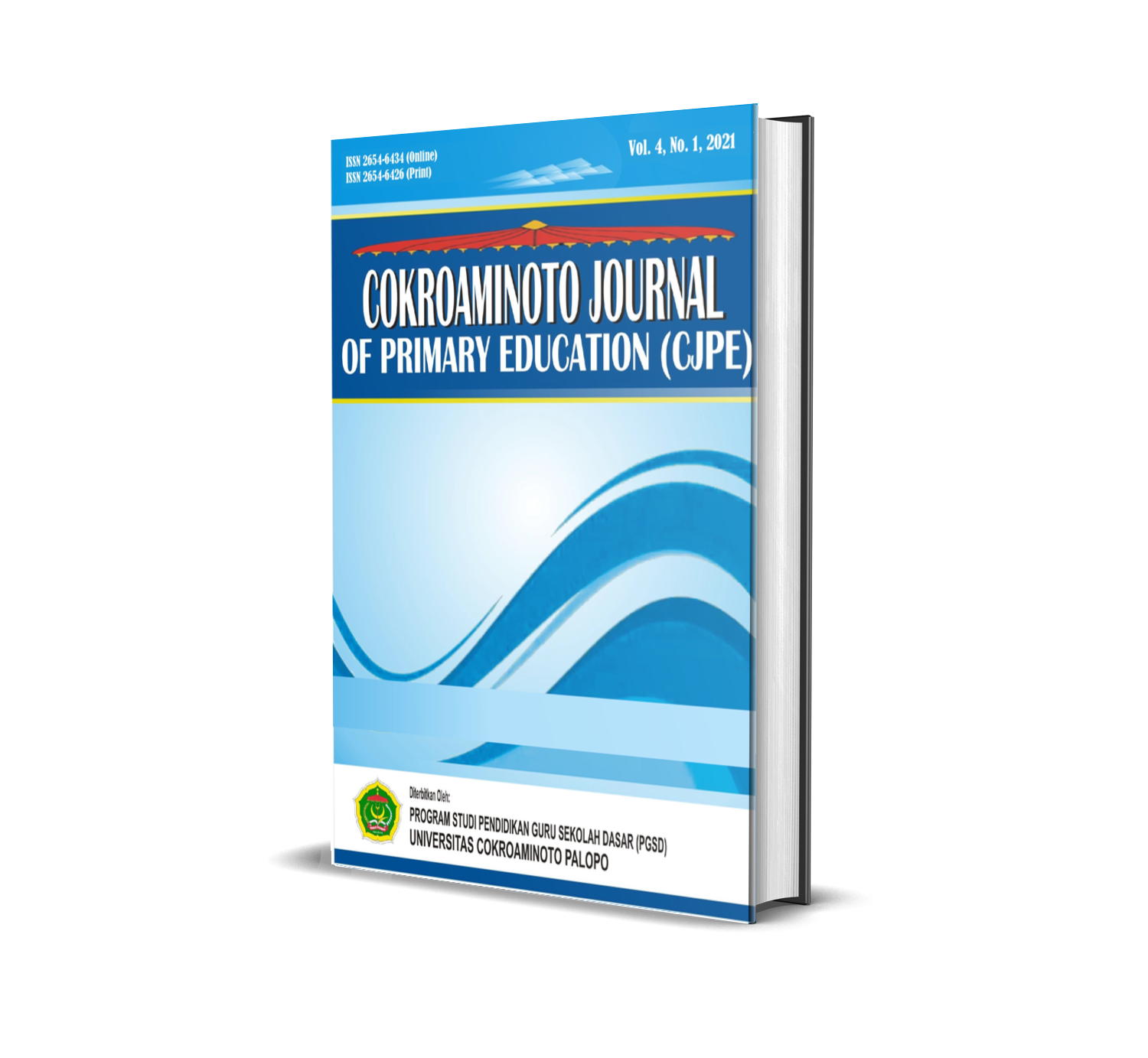Pengaruh Keterampilan Belajar Mandiri, Disiplin Belajar, dan Keinginan Berprestasi Terhadap Hasil Belajar Mahasiswa UPBJJ Universitas Terbuka Makassar
DOI:
https://doi.org/10.30605/cjpe.512022.1655Keywords:
Belajar Mandiri, Disiplin Belajar, Keinginan Berprestasi, Hasil Belajar, Multivel RegeresiAbstract
Penelitian ini menujukkan keterampilan belajar mandiri, disiplin belajar, keinginan berprestasi pada mahasiswa pendidikan tinggi jarak jauh menghasilkan prestasi belajar. Belajar mandiri mahasiswa S1 PGSD. Penelitian adalah penelitian suvey bentuk analisis multivel regeresi dengan analisis jalur. Populasi penelitian ini adalah mahasiswa Program S1 PGSD program pendas UPBJJ-UT Makassar Tahun 2018 Sampel proforsional adalah Mahasiswa Program S1 PGSD yang Teknik pengambilan Sampel menggunakan undian dalam suatu Kabupaten dengan mengambil dari total mahasiswa yang semester V Tahun 2018. Hasil penelitian menjelaskan (1) keterampilan belajar mandiri berpengaruh secara signifikan tarhadap hasil belajar, (2) disiplin belajar mandiri berpengaruh secara signifikan terhadap hasil belajar, (3) Keinginan berprestasi berpengaruh secara signifikan terhadap hasil belajar, (4) Keterampilan belajar mandiri, disiplin belajar, dan keinginan berprestasi secara simultan berpengaruh positif terhadap hasil belajar
Downloads
References
Arifin, Z. (2011) Evaluasi Pembelajaran, Penerbit PT. Remaja Rodakarya offset. Bandun
Ahmadi K. L., (2012) Mengembangkan Pembelajaran Aktif, Inovatif, Kreatif, Efektif, Menyenagkan, Gembira dan Berbobot, penerbit PT. Perestasi Pustakrya Jakarta Indonesia
Diningrat, S. W. M. (2019). Desain Model Pembelajaran Online sebagai Upaya Memfasilitasi Belajar di Tempat Kerja. Jurnal Pendidikan Terbuka Dan Jarak Jauh, 20(1), 17-24.
Hanafiah, N (2009) Konsep Strategi Pembelajaran, Penerbit PT Rafika Aditama Bandung.
Hendrayana, A. S. (2014). Motivasi Belajar, Kemandirian Belajar dan Prestasi Belajar Mahasiswa Beasiswa BIDIKMISI DI UPBJJ UT Bandung. Jurnal Pendidikan Terbuka dan Jarak Jauh, 15(2), 81-87.
Hiemstra, R. (1994). Helping learners take responsibility for self‐directed activities. New directions for adult and continuing education, 1994(64), 81-87.
Murad H Mohammad, Fernado Coto-Yglesias, (2010) The Effectivenes of Selef-Directed learning in healthprofession education:a systematic Review, Medical Education 1507-1608.
Mc Celleland.C (1999) The Achivement motive, New York, Irvingtong Publisher Inc
Minkyoung, K., & Eulho, J (2014) Analyzing The Human Learning And Developmen Potintial of Websites Available For Internasional Learning, Internasional Jurnal Self-Directed Learning 11(1)
National Research Council of Canada (2011) The Challenges to Connectivisit Learningon Open online Netweks: Learning Experriences during a Masive Open Online Course, 12(3)
Nurtanio A. P., (2009) Kefektifan Belajar Mandiri Mahasiswa Program Studi Pendidikan Anak Usia Dini Universitas Terbuka UPBJJ-Yokyakarta.
Nugraheni Endang (2006), Gaya Belajar dan Strategi Belajar Mahasiswa Jarak Jauh Kasus di Universitas Terbuka, Indonesia Universitas Terbuka
Heimstra, R (1994) Self-Directed Learning, The International Encyclopedia of education (second edition) Osford: Pergamon press reprinted here by Permission.
Komalasari Kokon(2013) Pembelajaran Kontekstual Konsep dan Aplikasi, Penerbit PT Refika Aditama, Bandung.
Knowles., M (1975) Self-Derectic learning: Aguide for leaners and teacher, New York, Ny Assiciation Press.
Oktavianingtyas, E. (2013) Studi Tentang Faktor-Faktor Yang Berpengaruh Prestasi Belajar Mahasiswa Program Studi Pendidikan Matimatika, FKIP Jember @Kadikma, 4(2), 13-16
Pibadi B. A. (2010) Model Desain Sistem Pembelajaran, Penerbit Dian Rakyat, 2014 Jakarta.
Ratumanan, G. T. (2004) Belajar dan Pembelajaran Penerbit Unesa University Press 2004.
Suardana, I. K. (2012) Implemntasi model belajar mendiri untuk meningkatkan aktivitas hasil belajar kemandirian belajar mahasiswa
Sudibyo S. (1989) Psioklogi Olah Raga. PT Anem Kosong Anem. Jakarta.Sudirman, A. M. (2005) Interaksi dan Motivasi Belajar Mengajar, Jakarta PT RajaGrapindo Persada.
Downloads
Published
How to Cite
Issue
Section
License
In submitting the manuscript to the journal, the authors certify that:
- They are authorized by their co-authors to enter into these arrangements.
- The work described has not been formally published before, except in the form of an abstract or as part of a published lecture, review, thesis, or overlay journal.
- That it is not under consideration for publication elsewhere,
- That its publication has been approved by all the author(s) and by the responsible authorities – tacitly or explicitly – of the institutes where the work has been carried out.
- They secure the right to reproduce any material that has already been published or copyrighted elsewhere.
- They agree to the following license and copyright agreement.
License and Copyright Agreement
Authors who publish with CJPE agree to the following terms:
- Authors retain copyright and grant the journal right of first publication with the work simultaneously licensed under Creative Commons Attribution License (CC BY-SA 4.0) that allows others to share the work with an acknowledgement of the work's authorship and initial publication in this journal.
- Authors are able to enter into separate, additional contractual arrangements for the non-exclusive distribution of the journal's published version of the work (e.g., post it to an institutional repository or publish it in a book), with an acknowledgement of its initial publication in this journal.
- Authors are permitted and encouraged to post their work online (e.g., in institutional repositories or on their website) prior to and during the submission process, as it can lead to productive exchanges, as well as earlier and greater citation of published work.










